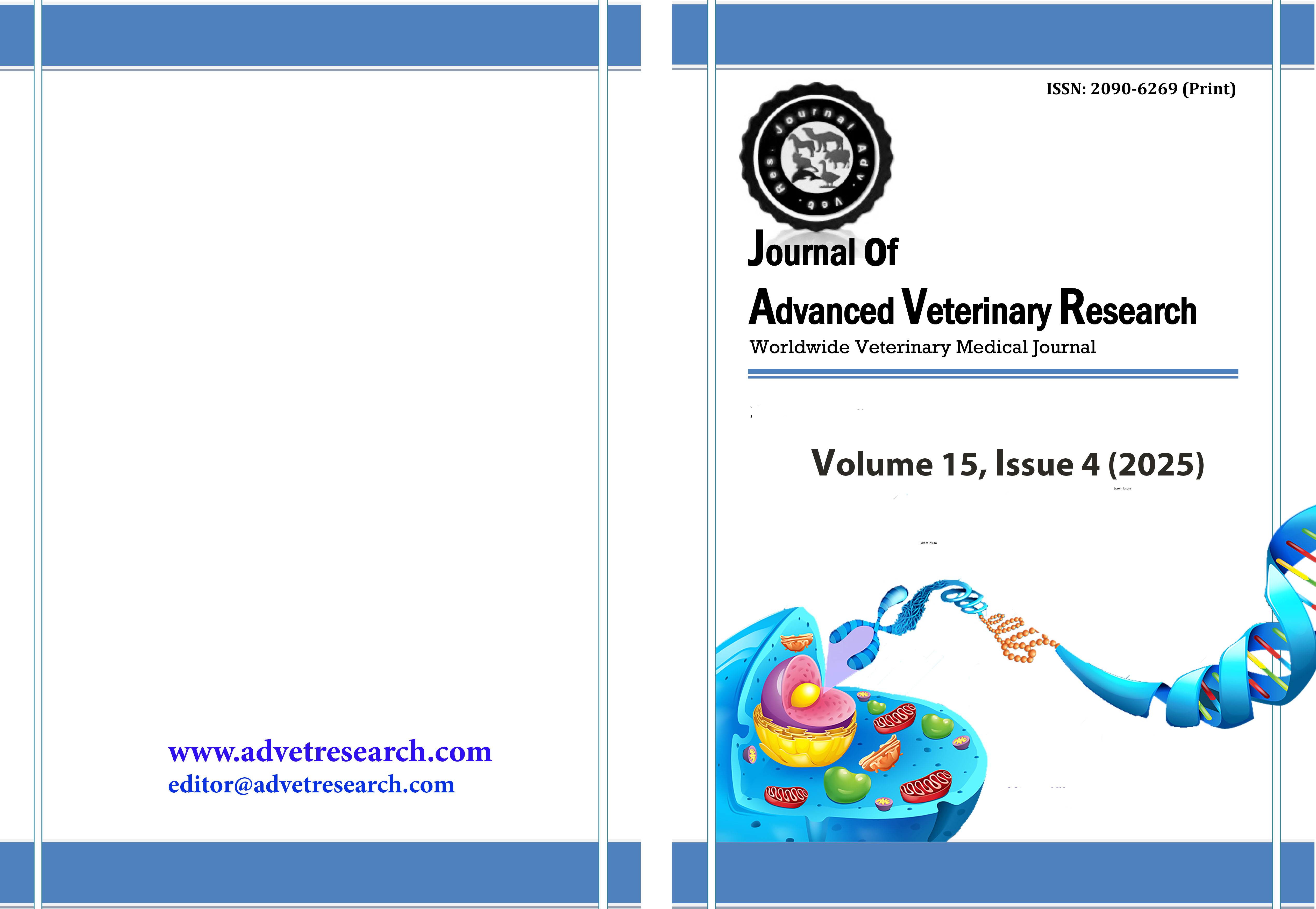Paratyphoid salmonellosis: A disease of significance in pigeons (Columba livia)
Keywords:
Clinical picture, Diagnosis, Paratyphoid Salmonellae, Pigeons, TreatmentAbstract
Pigeons may be kept in captivity as pet and companion birds, or raised for laboratory specimens, sport or racing, and meat production. Pigeons (Columba livia) belong to order Columbiformes and family Columbidae. Pigeons are susceptible to many important bacterial, viral and parasitic threats. One of the most important bacterial diseases that affect all breads of pigeons is salmonellosis or paratyphoid. Until now, the disease still constitutes one of the most important serious diseases of economic and zoonotic significance for owners of pigeons. Different serotypes of Salmonella have been isolated from pigeons. However, Salmonella (S. Typhimurium) and S. Enteritidis are the most common. Salmonellosis in young squab pigeons causes high mortalities, besides the enteric and nervous manifestations. Chronic carrier diseased pigeons create a hazard to the other avian species and humans. The close contact with pigeons and their droppings is a risk for people who frequently share the same environment. Therefore, pigeon’s flocks should be regularly checked for the early detection of Salmonella infection status, and the positive reactors should be eradicated with a strict biosecurity plan. Antibiotic sensitivity test is very important before any treatment of Salmonella infection in pigeons as a result of continuous development of resistance. Since the multiple needs for raising pigeons and the scientific literature discussing the most important infections of pigeons are insufficient, this article spots-light on salmonellosis in pigeons regarding the disease infection and transmission, signs and lesions, diagnosis, treatment, and vaccination.
Downloads
Published
How to Cite
Issue
Section
License
Copyright (c) 2025 Journal of Advanced Veterinary Research

This work is licensed under a Creative Commons Attribution-NonCommercial-NoDerivatives 4.0 International License.
Users have the right to read, download, copy, distribute, print, search, or link to the full texts of articles under the following conditions: Creative Commons Attribution-NonCommercial-NoDerivatives 4.0 International (CC BY-NC-ND 4.0).
Attribution-NonCommercial-NoDerivs
CC BY-NC-ND
This work is licensed under a Creative Commons Attribution-NonCommercial-NoDerivatives 4.0 International (CC BY-NC-ND 4.0) license




